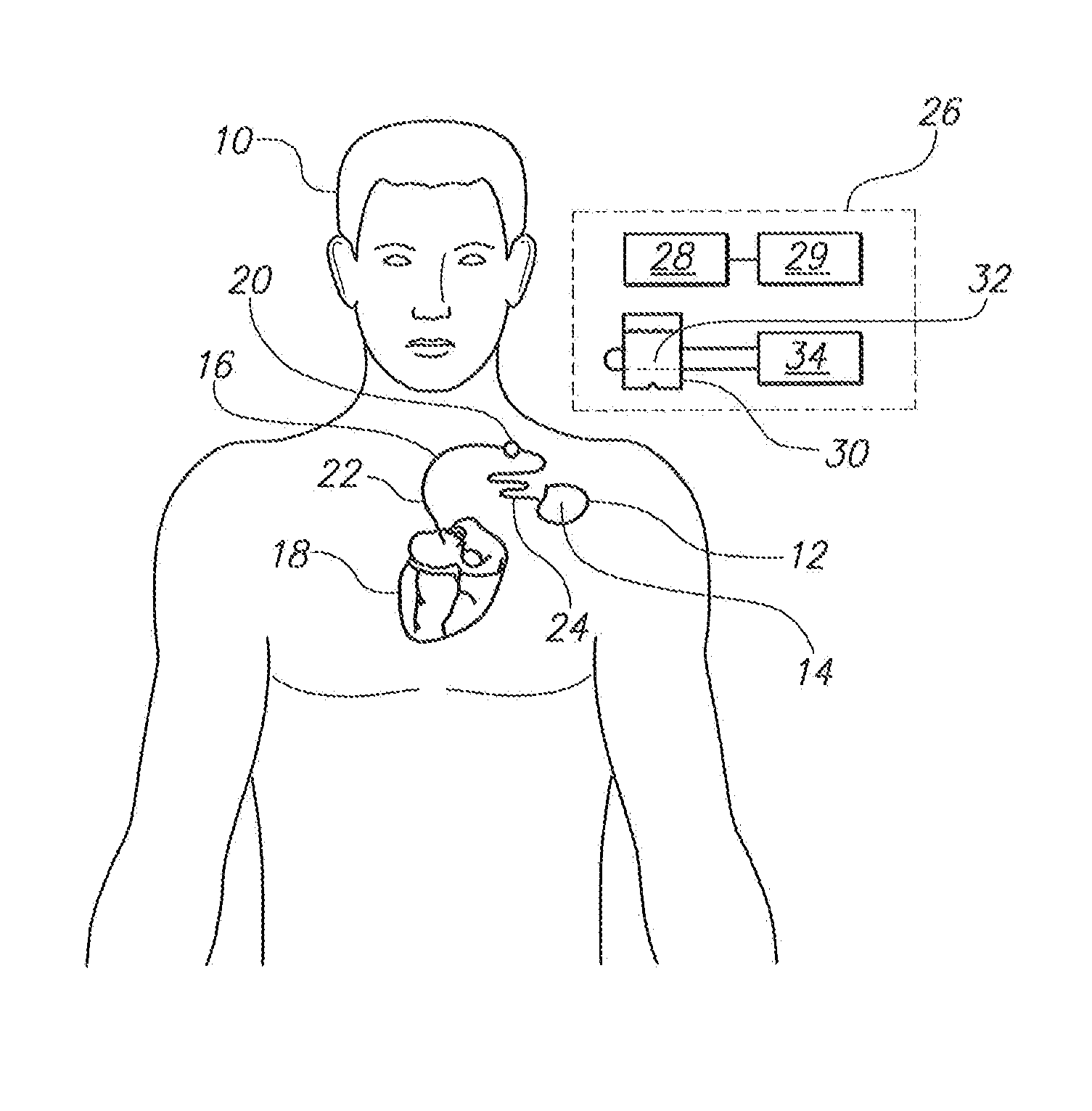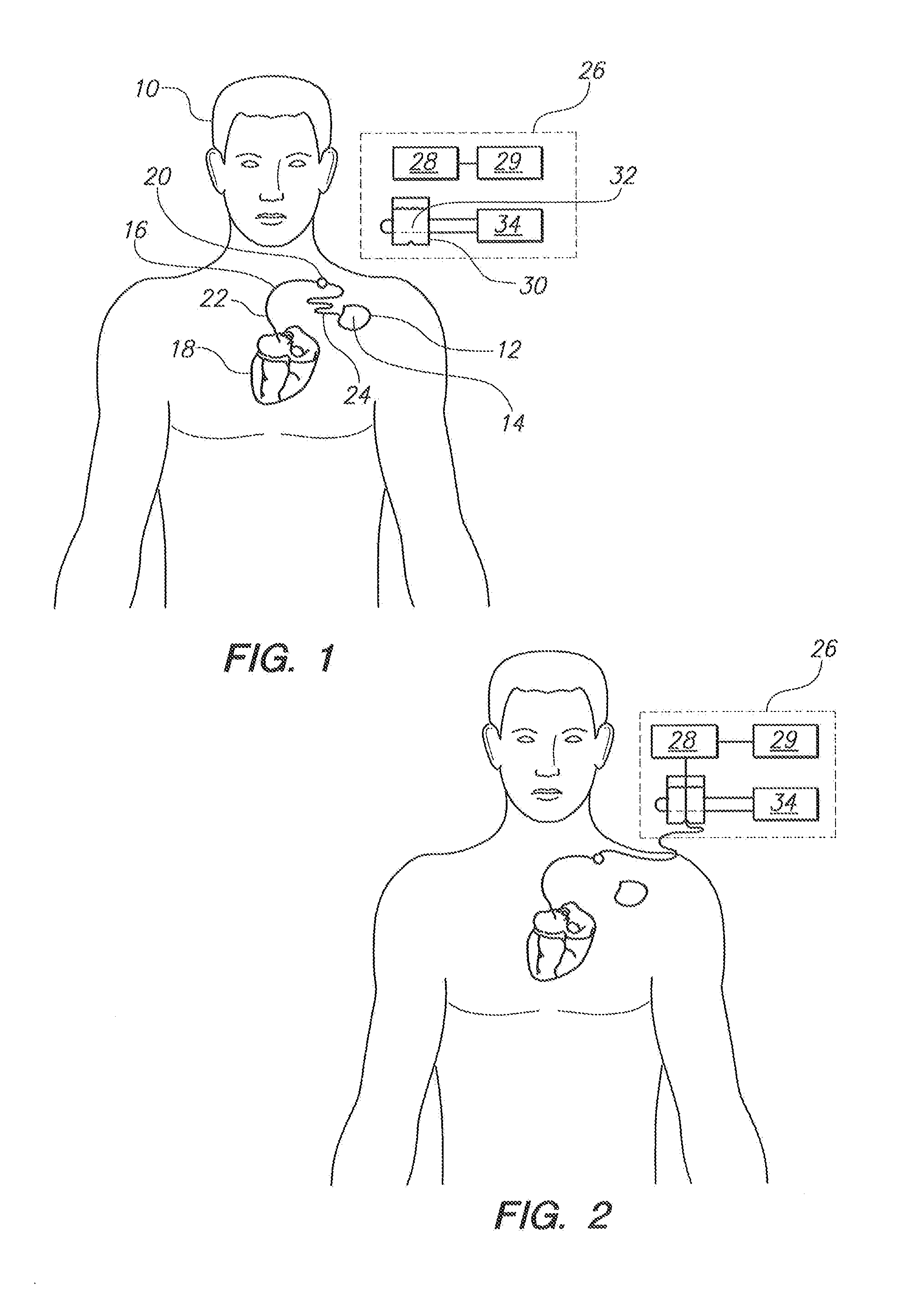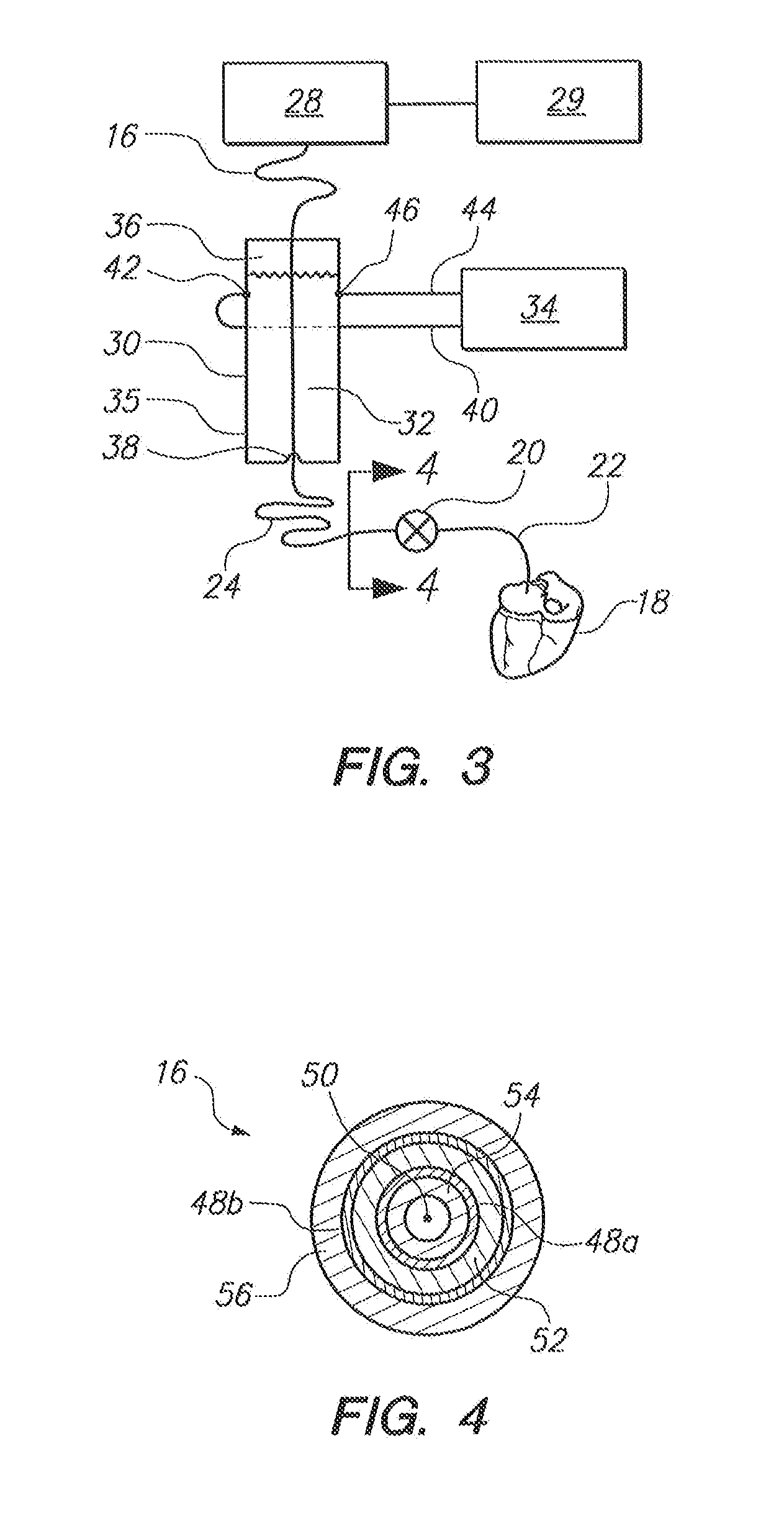Extracorporeal Unit for Inspecting the Insulation of an Electrical Wire of an Implanted Medical Device
a medical device and electrical wire technology, applied in the field of medical devices, can solve the problem of more susceptible to damage of the segment, and achieve the effect of improving the electrical coupling
- Summary
- Abstract
- Description
- Claims
- Application Information
AI Technical Summary
Benefits of technology
Problems solved by technology
Method used
Image
Examples
Embodiment Construction
[0021]Referring initially to FIG. 1, a patient 10 is shown with a medical device 12 implanted in his body. As shown, the medical device 12 includes an electronic device 14 and an elongated lead 16. For normal operation of the medical device 12, the proximal end of the lead 16 is electrically connected to the electronic device 14 and the distal end of the lead 16 is attached to the patient's heart 18. For example, the medical device 12 can be a conventional device such as an artificial cardiac pacemaker, an implantable cardioverter defibrillator (ICD), a combination pacemaker / defibrillator or any other implantable medical device known in the pertinent art which has an implanted lead that sends electrical impulses to or receives electrical signals from a patient's organ such as the heart 18.
[0022]For the above-described purposes, the electronic device 14 typically includes an internal battery, pulse generating circuit, a sensor for monitoring the electrical activity of the heart and a...
PUM
 Login to View More
Login to View More Abstract
Description
Claims
Application Information
 Login to View More
Login to View More - R&D
- Intellectual Property
- Life Sciences
- Materials
- Tech Scout
- Unparalleled Data Quality
- Higher Quality Content
- 60% Fewer Hallucinations
Browse by: Latest US Patents, China's latest patents, Technical Efficacy Thesaurus, Application Domain, Technology Topic, Popular Technical Reports.
© 2025 PatSnap. All rights reserved.Legal|Privacy policy|Modern Slavery Act Transparency Statement|Sitemap|About US| Contact US: help@patsnap.com



